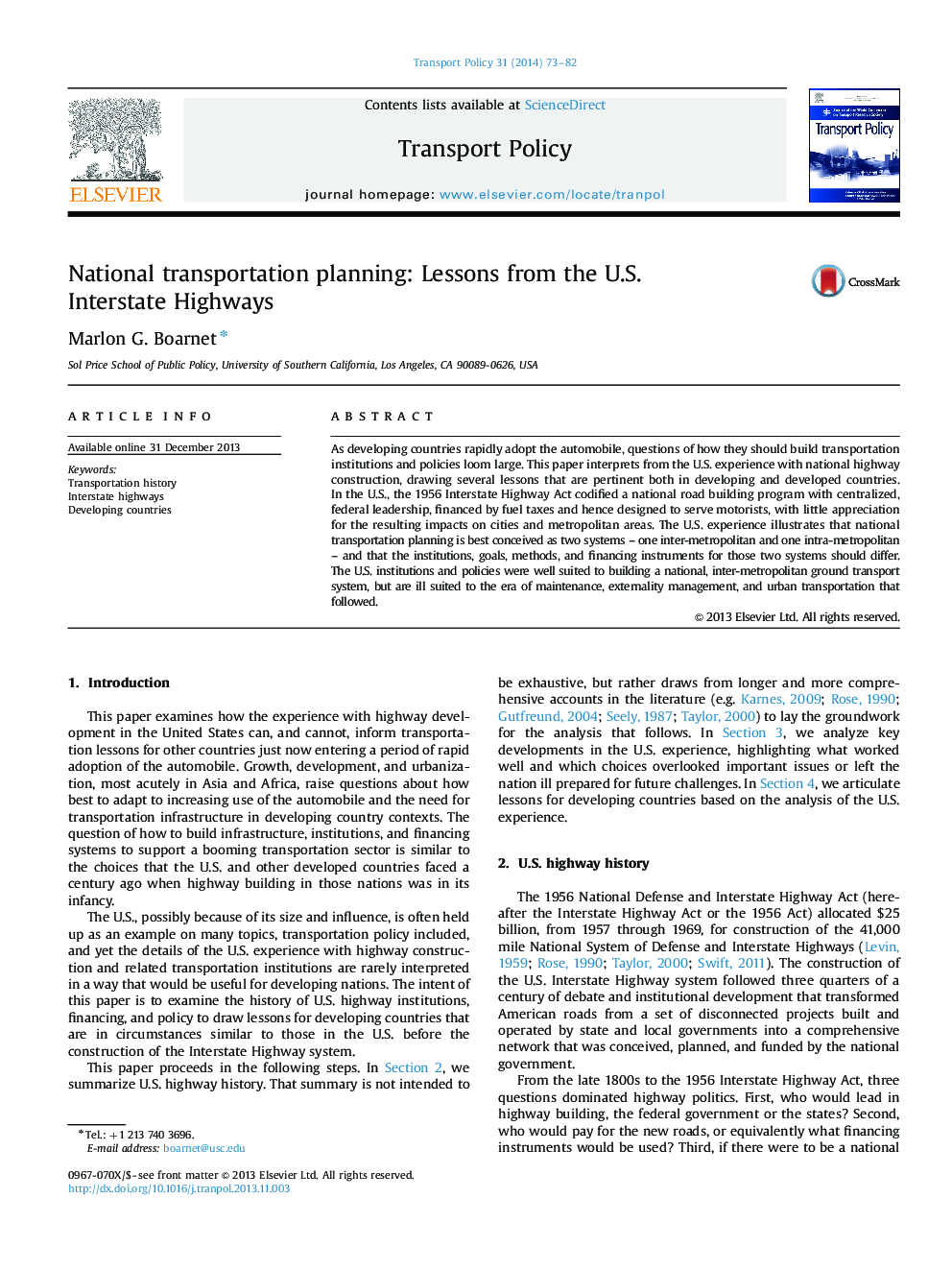| Article ID | Journal | Published Year | Pages | File Type |
|---|---|---|---|---|
| 7498067 | Transport Policy | 2014 | 10 Pages |
Abstract
As developing countries rapidly adopt the automobile, questions of how they should build transportation institutions and policies loom large. This paper interprets from the U.S. experience with national highway construction, drawing several lessons that are pertinent both in developing and developed countries. In the U.S., the 1956 Interstate Highway Act codified a national road building program with centralized, federal leadership, financed by fuel taxes and hence designed to serve motorists, with little appreciation for the resulting impacts on cities and metropolitan areas. The U.S. experience illustrates that national transportation planning is best conceived as two systems - one inter-metropolitan and one intra-metropolitan - and that the institutions, goals, methods, and financing instruments for those two systems should differ. The U.S. institutions and policies were well suited to building a national, inter-metropolitan ground transport system, but are ill suited to the era of maintenance, externality management, and urban transportation that followed.
Related Topics
Social Sciences and Humanities
Social Sciences
Geography, Planning and Development
Authors
Marlon G. Boarnet,
